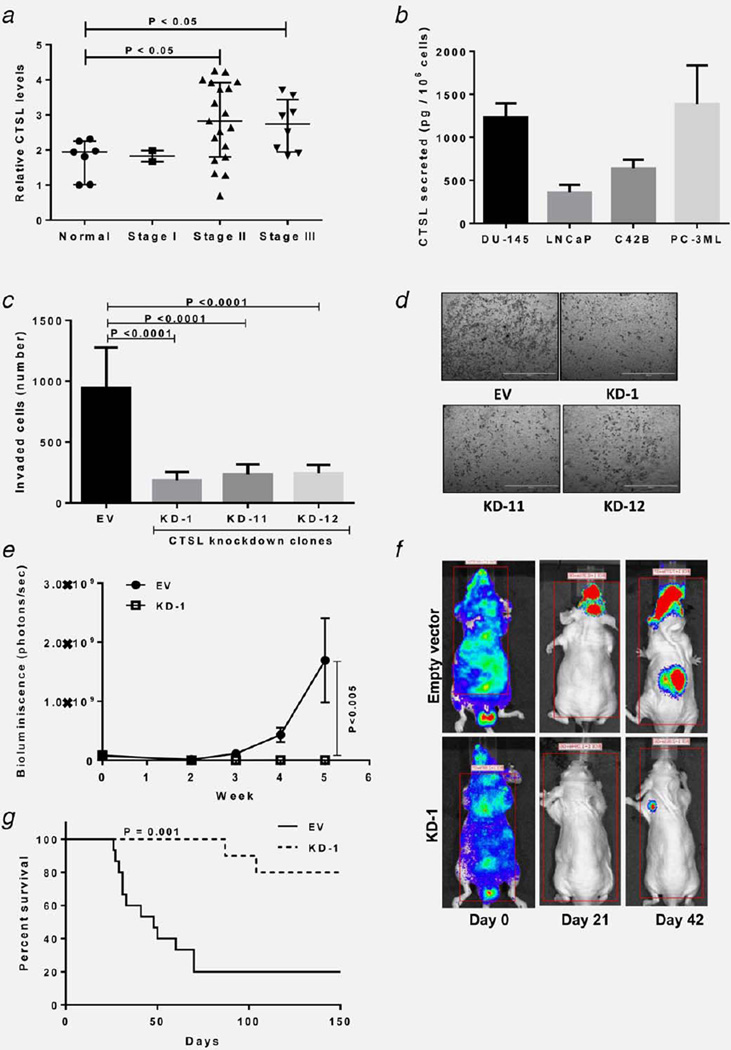Figure 1.
CTSL ablation reduces metastatic disease burden. (a) CTSL semiquantitiative RT-PCR using Tissuescan prostate tissue panels. CTSL mRNA levels were normalized to β-actin. Line, median; whiskers, values at 25th and 75th percentiles; Mann-Whitney test. (b) CTSL secretion by metastatic prostate cancer cell lines. Bars represent means ± s.e.m from three independent experiments. (c) Invasion assay testing the effect of CTSL deficiency on the invasive capacity of PC-3ML cells. Bars represent means ± s.e.m from three independent experiments; Student’s t test. (d) Representative images of invaded cells from c, scale bar= 2 mm. (e) In vivo bone metastasis assay. Measurement of bone metastasis burden based on bioluminescence intensity (photons per second); n ≥ 10. Results are means ± s.e.m, analysis of variance. (f) Representative bioluminescence images of median mice inoculated with empty vector or CTSL shRNA transfected PC-3ML cells. (g) Kaplan-Meier survival curves of mice inoculated with empty vector of CTSL shRNA transfected PC-3ML cells; log-rank test.

